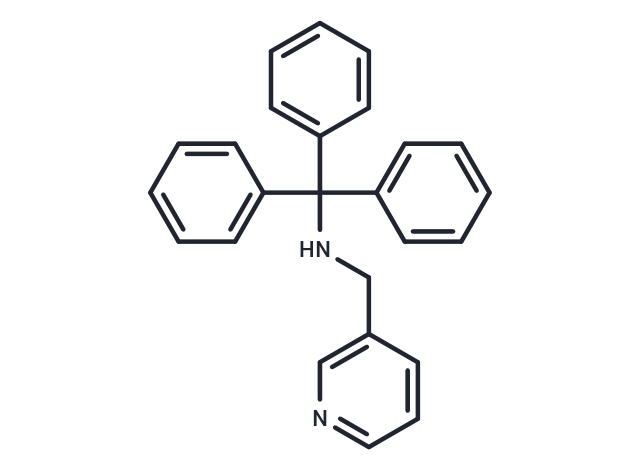Shopping Cart
- Remove All
 Your shopping cart is currently empty
Your shopping cart is currently empty

UCL 2077 is a subtype-selective blocker of the epilepsy-associated KCNQ channels and it also is a selective slow-afterhyperpolarization channel blocker,with IC50 of 500 nM in hippocampal neurons in culture, having minimal effects on Ca2+ channels, action potentials, input resistance, and the medium afterhyperpolarization.

| Pack Size | Price | Availability | Quantity |
|---|---|---|---|
| 1 mg | $48 | In Stock | |
| 5 mg | $98 | In Stock | |
| 10 mg | $143 | In Stock | |
| 25 mg | $259 | In Stock | |
| 50 mg | $383 | In Stock | |
| 100 mg | $533 | In Stock | |
| 200 mg | $737 | In Stock | |
| 1 mL x 10 mM (in DMSO) | $111 | In Stock |
| Description | UCL 2077 is a subtype-selective blocker of the epilepsy-associated KCNQ channels and it also is a selective slow-afterhyperpolarization channel blocker,with IC50 of 500 nM in hippocampal neurons in culture, having minimal effects on Ca2+ channels, action potentials, input resistance, and the medium afterhyperpolarization. |
| Molecular Weight | 350.46 |
| Formula | C25H22N2 |
| Cas No. | 918311-87-2 |
| Smiles | C(NCC=1C=CC=NC1)(C2=CC=CC=C2)(C3=CC=CC=C3)C4=CC=CC=C4 |
| Relative Density. | no data available |
| Storage | Powder: -20°C for 3 years | In solvent: -80°C for 1 year | Shipping with blue ice. | |||||||||||||||||||||||||||||||||||
| Solubility Information | DMSO: 50 mg/mL (142.67 mM), Sonication is recommended. | |||||||||||||||||||||||||||||||||||
Solution Preparation Table | ||||||||||||||||||||||||||||||||||||
DMSO
| ||||||||||||||||||||||||||||||||||||

Copyright © 2015-2025 TargetMol Chemicals Inc. All Rights Reserved.